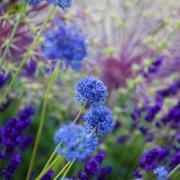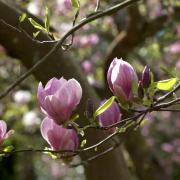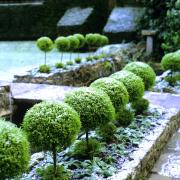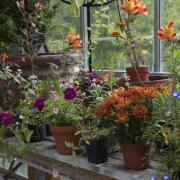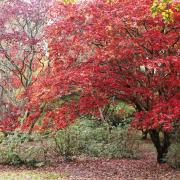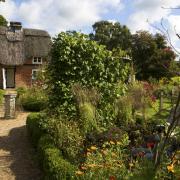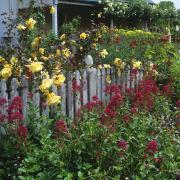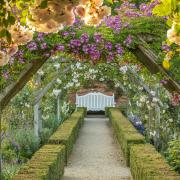This month enjoy an autumnal stroll around the historic gardens at Old Alresford House, Grade II listed and the only surviving garden of its type in the South of England.
Restored to plans from 1764 by Richard Woods, a contemporary of Capability Brown and his great rival in the Natural garden movement, Old Alresford House’s gardens are an important part of our national heritage. “His hand-drawn plan, which still hangs in the house, is a design for a ferme ornée – very few examples survive - 22 acres of grazed parkland and chalkland flower meadow surrounded by 13 acres of immaculate striped lawns, ornamental shrubberies, and a mile perimeter woodland walk, revealing vistas across the estate and the surrounding South Downs, unchanged over almost 250 years. Now all those years on, Richard Woods’ vision is finally complete,” explains owner Mike Hall, who has painstakingly revived the gardens since 2004.
Some areas have been uncovered, such as the beech walk, which was cleared to reveal the vision of clumps of trees interspersed with vistas and original flint and hoggin paths were discovered after removing impenetrable undergrowth, while in other areas it has been faithfully created to the Woods plan. “We are fortunate that until 2004 the estate had remarkably been left completely untouched by all successive owners apart from a ha-ha installed through the middle of the lawn in the 1920s and the separation of the walled vegetable garden and Alresford pond from the estate in 1991,” adds Mike.
The 18th century house was originally home to Admiral Lord Rodney, one of Britain’s greatest naval heroes. After at first living happily there for many years, financial circumstances led him to flee to France letting out the house and abandoning the completion of the garden creation he had commissioned from Woods. He later retired to the house after his final naval successes and subsequently the estate remained in the Rodney family for six generations until 1876, though as it wasn’t their main house, it was frequently let out. Current owners Mike Hall and Shuna MacKillop, only the house’s sixth, have restored the house and gardens, allowing this elegant house to again come fully to life.
Guided by historical research and landscape architects Colvin & Moggridge who have been involved in the restoration of both Blenheim and Petworth, the couple has paid close attention to the detail of Wood’s plan. “Every tree is in its proper place and we’ve only used tree, shrub and flower varieties available in Britain in 1764,” adds Mike. This has resulted in an autumnal scene of maturing trees, including a selection of unusual pines, oaks cloaked in burnished gold and sea buckthorns heavy with orange berries. Accompanying these are some existing towering species, including a surviving native elm and a Wood’s favourite, a large Liriodendron tulipifera (tulip tree) reputedly planted by William IV.
In addition the 540-yard ha-ha on the original plan, the 22 shrubberies, sunken fences and woodland walks have been faithfully recreated. Gazing beyond the garden you may also see native rare-breed Dorset Horn sheep or contented cattle quietly grazing, befitting of the pastoral landscape originally envisioned. From further research it was learnt that there were field ponds for animals to drink from and these have been expanded to create a series of wildlife ponds. Admiral Rodney’s son had added a ‘voog’ to the estate, Hampshire dialect for bog, and this has led to some post 1764 trees being planted as well, including paperback maples, alders, birch and swamp cypress.
In contrast to the sense of tradition and history, close to the house Colvin & Moggridge have created more contemporary living spaces for the family. These spaces are more intimate and with a Mediterranean feel. Ferns shelter by walls, Japanese anemones billow in the slightest breeze and around the swimming pool, citrus fruit bask in the last of the season’s warm sun.
Opening the garden for the first time last June through the National Gardens Scheme, a few days after the official private opening with the landscape architects and invited guests, brought many visitors who showed a commitment to returning to watch the gardens mature.
“They were so taken by the combination of the ambitious restoration project that has taken eight years and the dramatic contemporary gardens.”
Mike’s top tips
• Instead of brick fences, use sunken fences to be less formal and heavy
• Use Ha-ha to replace fences as well.
• Ensure trees rise in clumps, not avenues.
• Use the views beyond to merge the garden into the surrounding landscape.
• Use upright conifers to draw the eye to the overall structure.
• Create a mix of areas with open sun, dappled light and deep shade to echo the classic Georgian design.
• Use native trees and plants to form a natural-looking landscape.
Pay a visit




